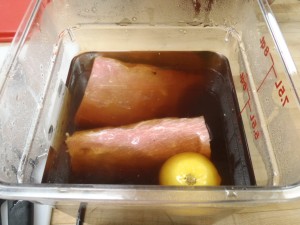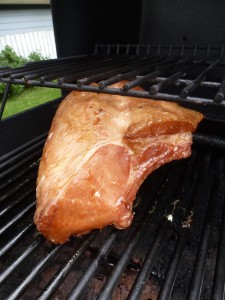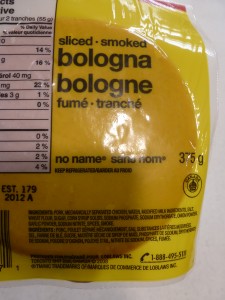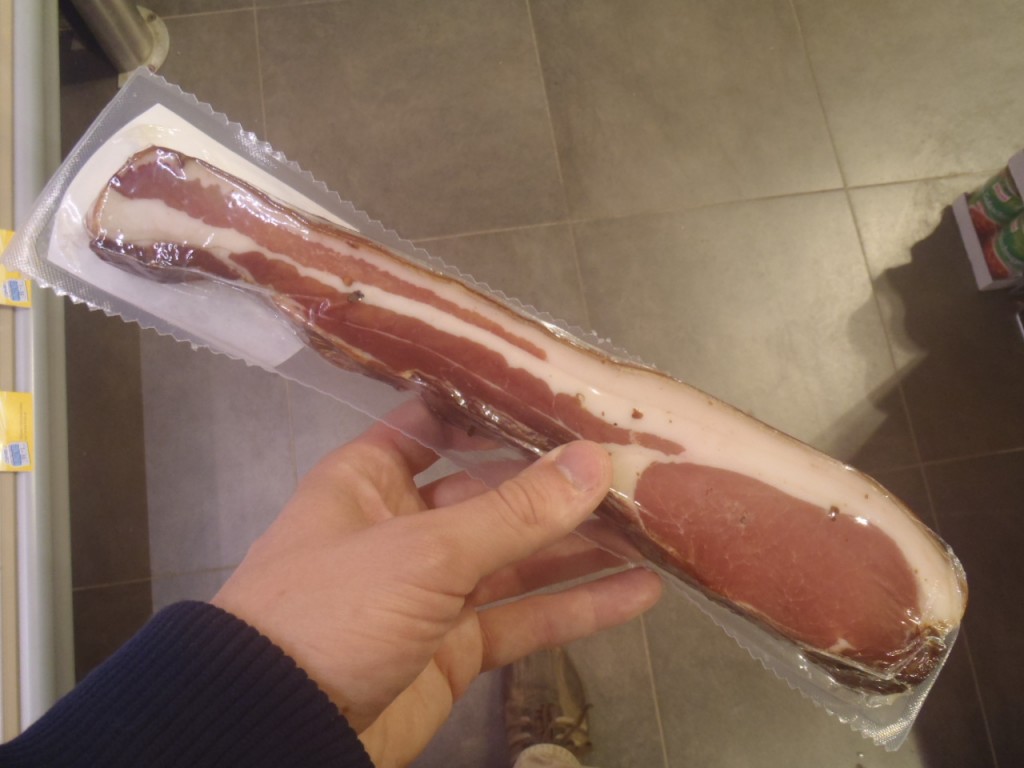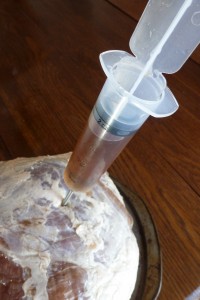Air-dried beef goes by many different names in many different places. The most famous, I think is bresaola, from northern Italy. In adjacent Switzerland air-dried beef is pressed into a unique block shape and called Bündnerfleisch, after the Swiss canton of Graubünden. Nearby in eastern France it is often lightly smoked, and called brési. In all of these alpine regions it is a common accompaniment for fondue.
Eye of round is one of the best cuts to use for air-dried beef. It is a single muscle, with very little internal fat, easily trimmed to a convenient size. First remove any silverskin and fat.
The cleaned eye of round:
The clean muscle is then rubbed with salt, … Continue reading.
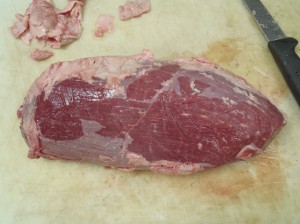
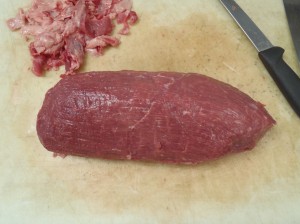
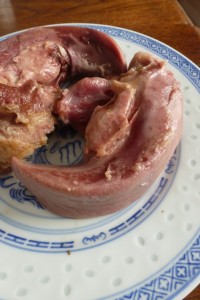 The tongue is one of those cuts that sounds way, way weirder than it really is.
The tongue is one of those cuts that sounds way, way weirder than it really is.